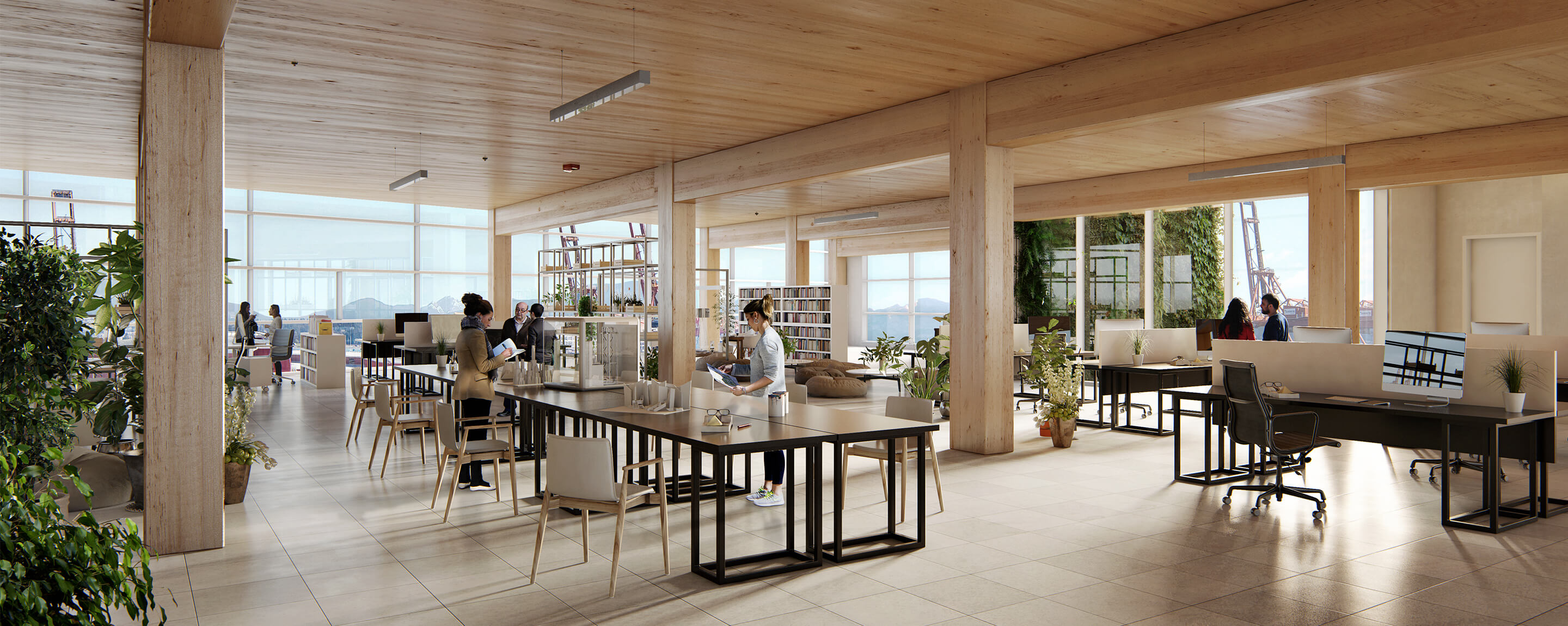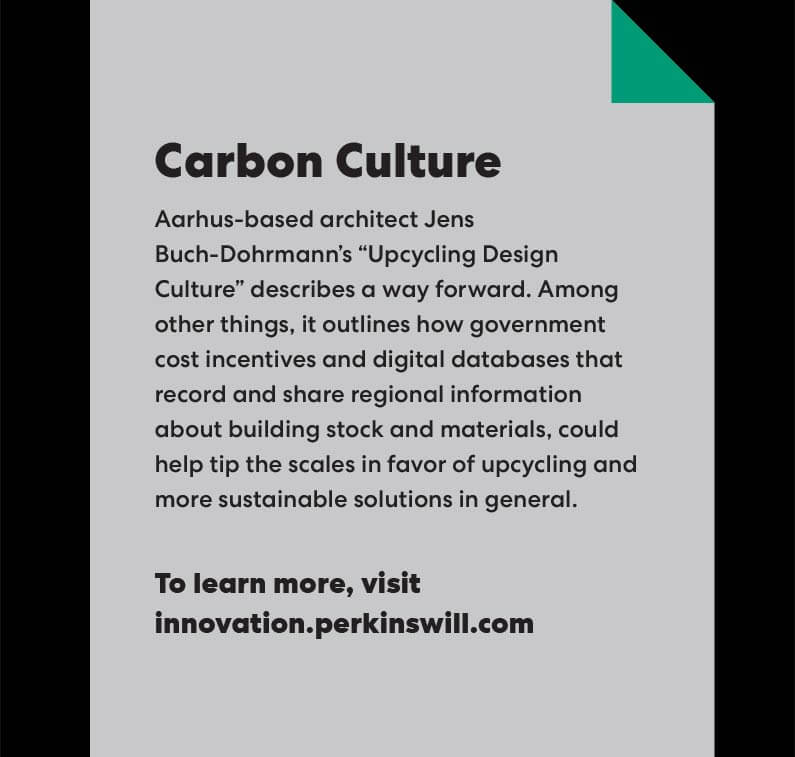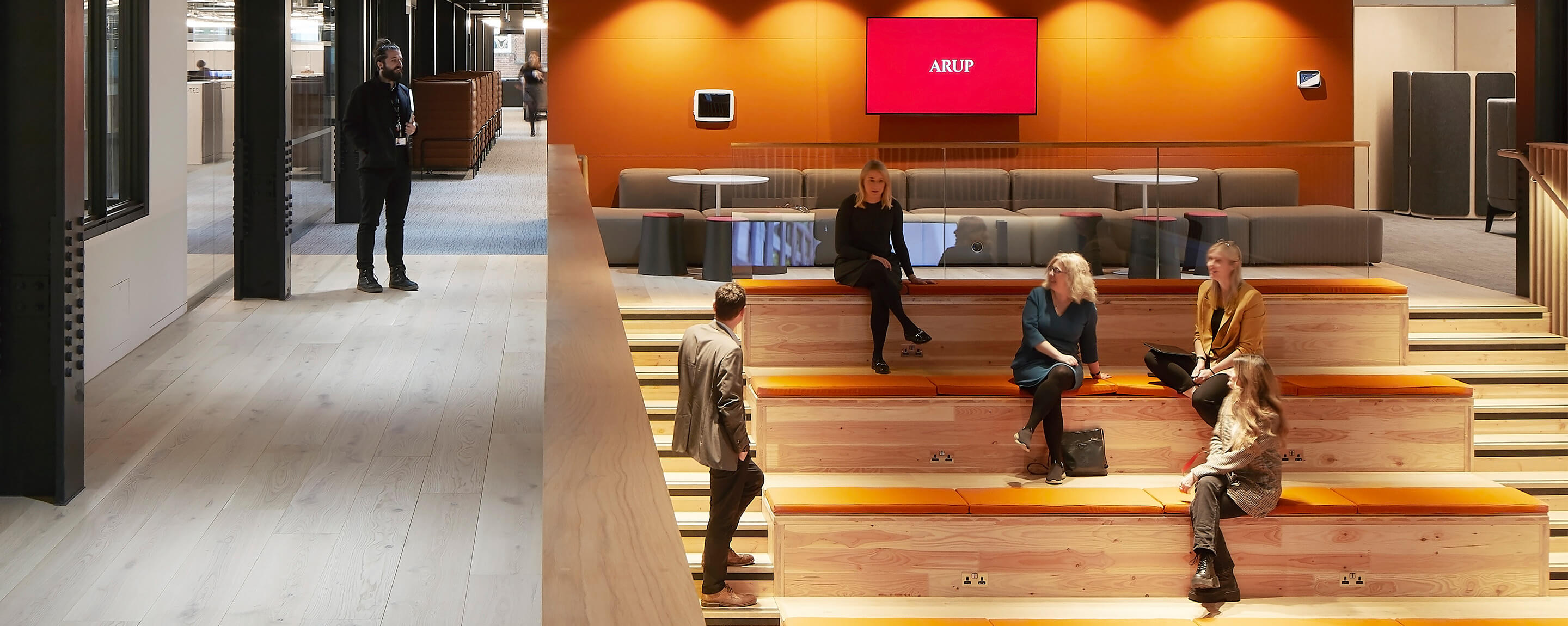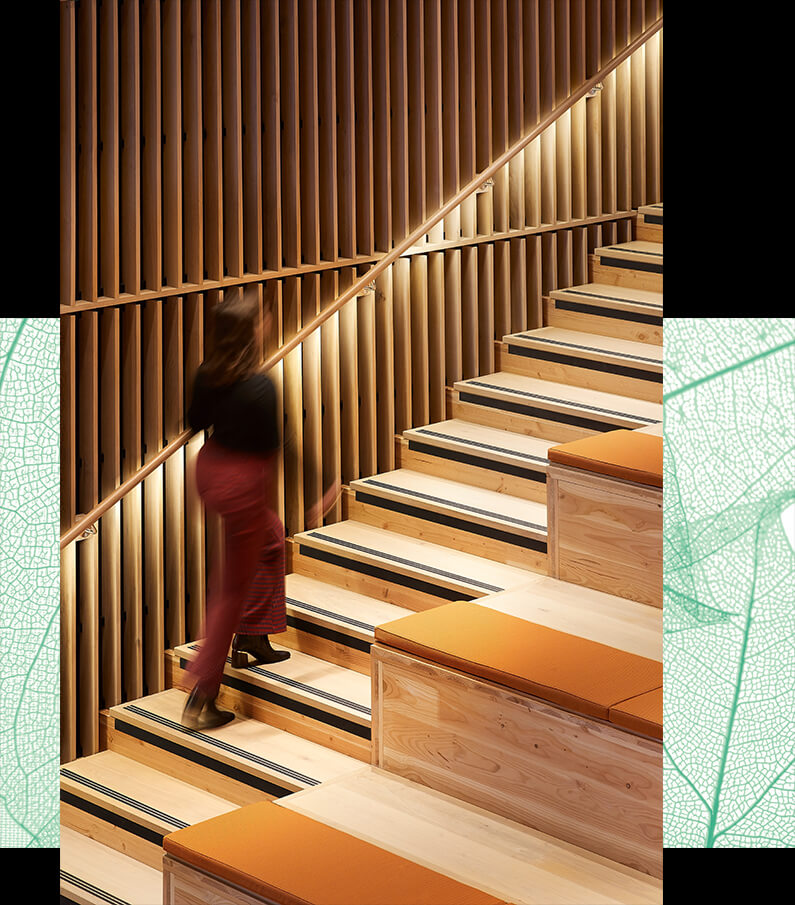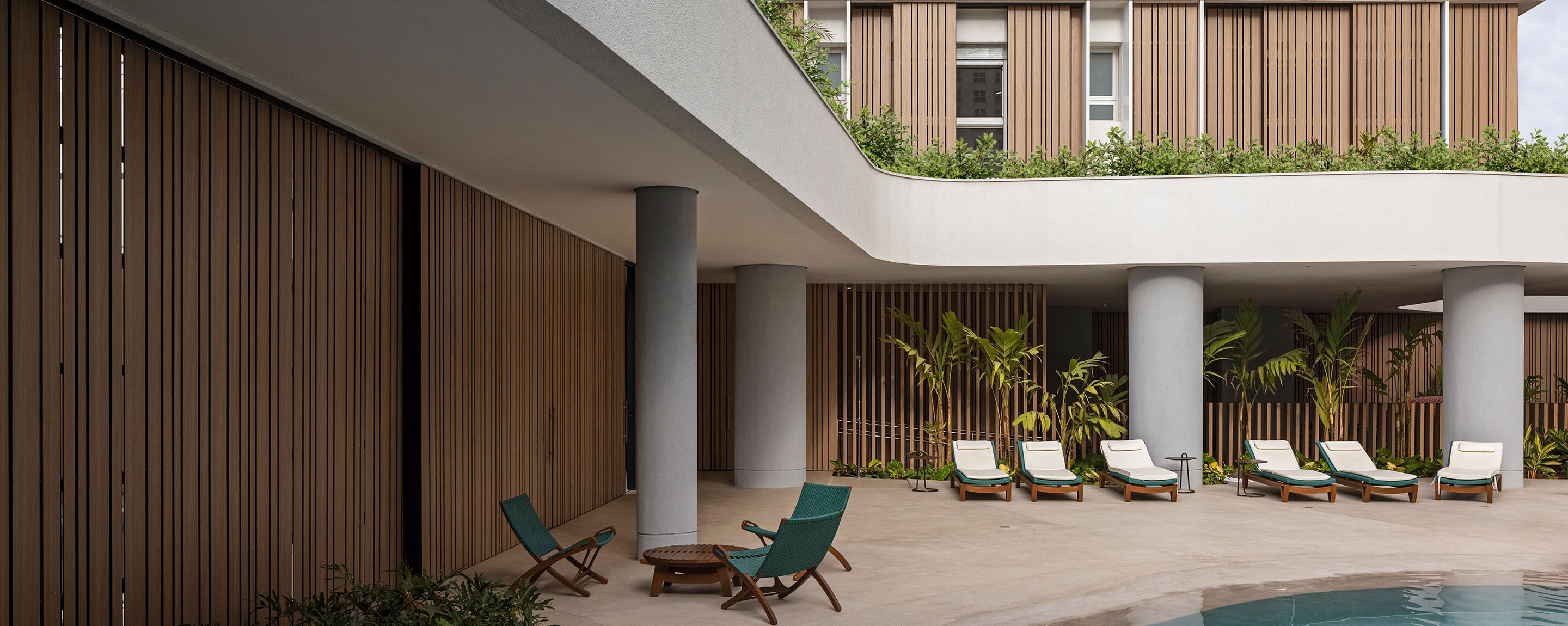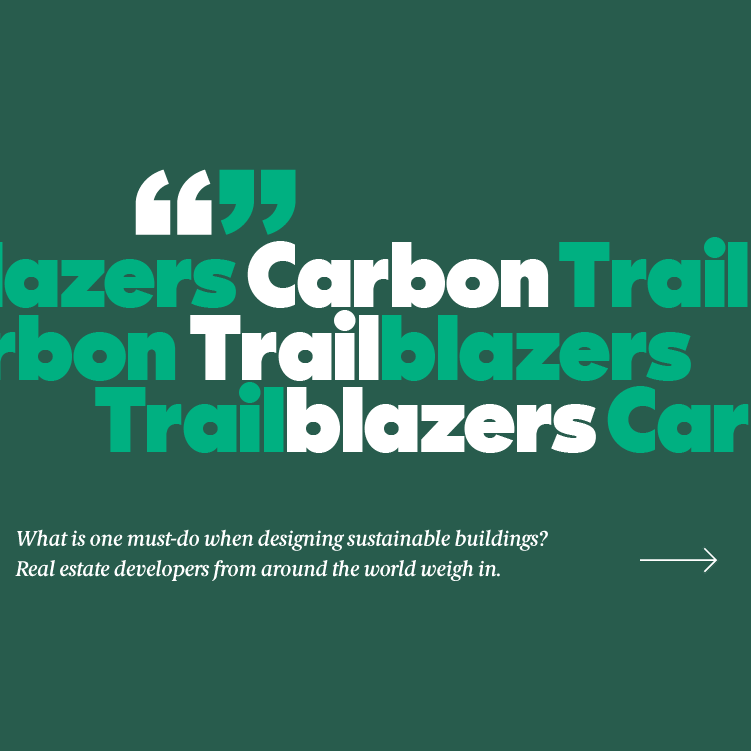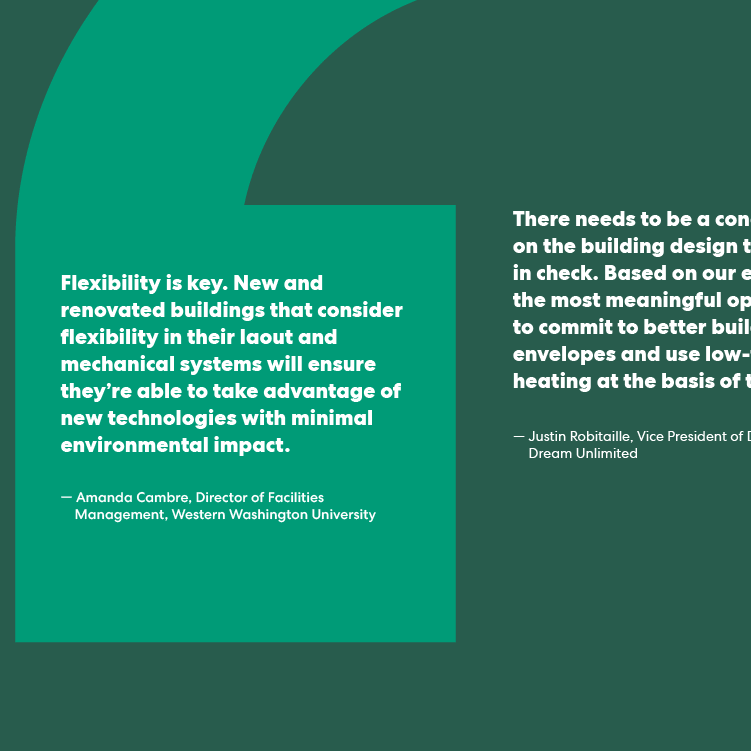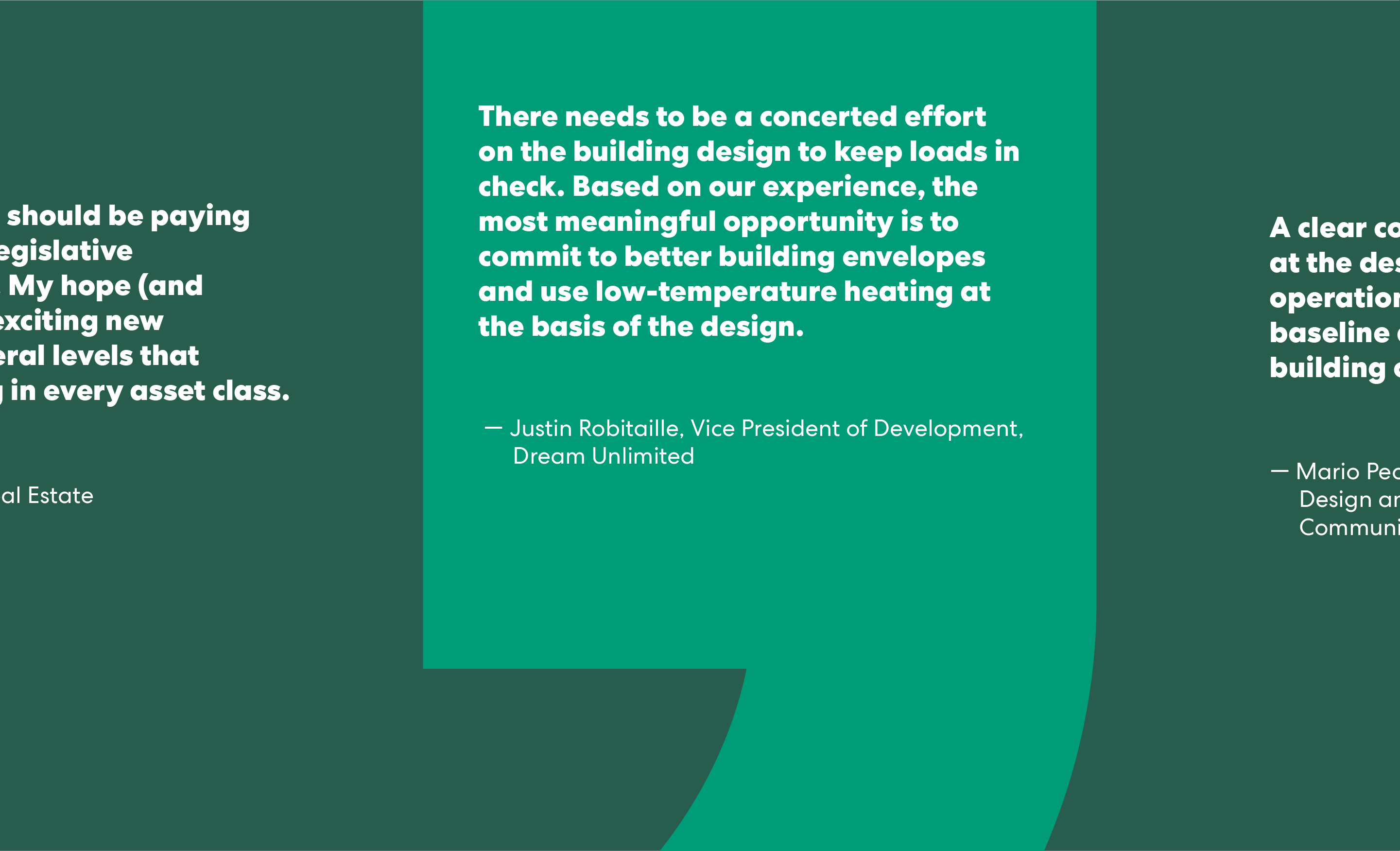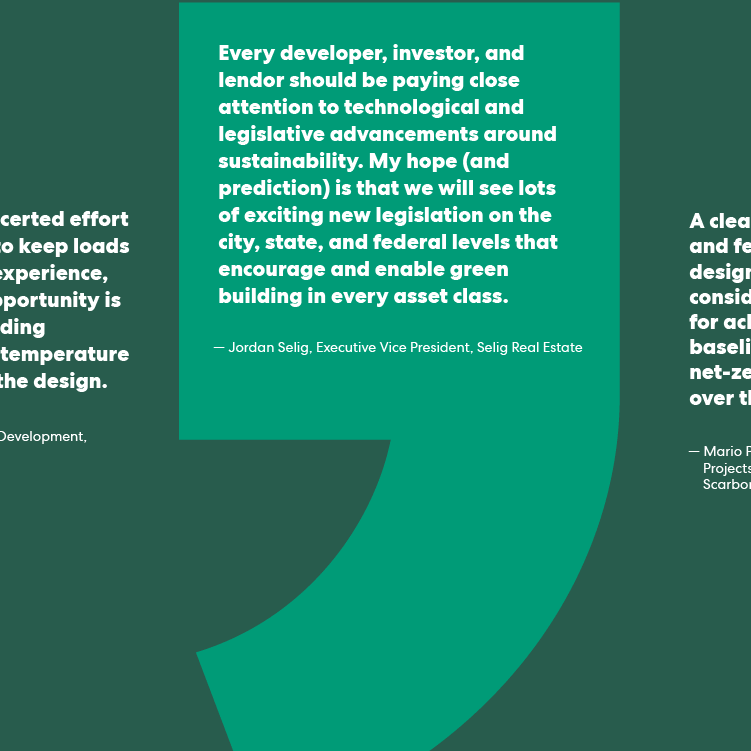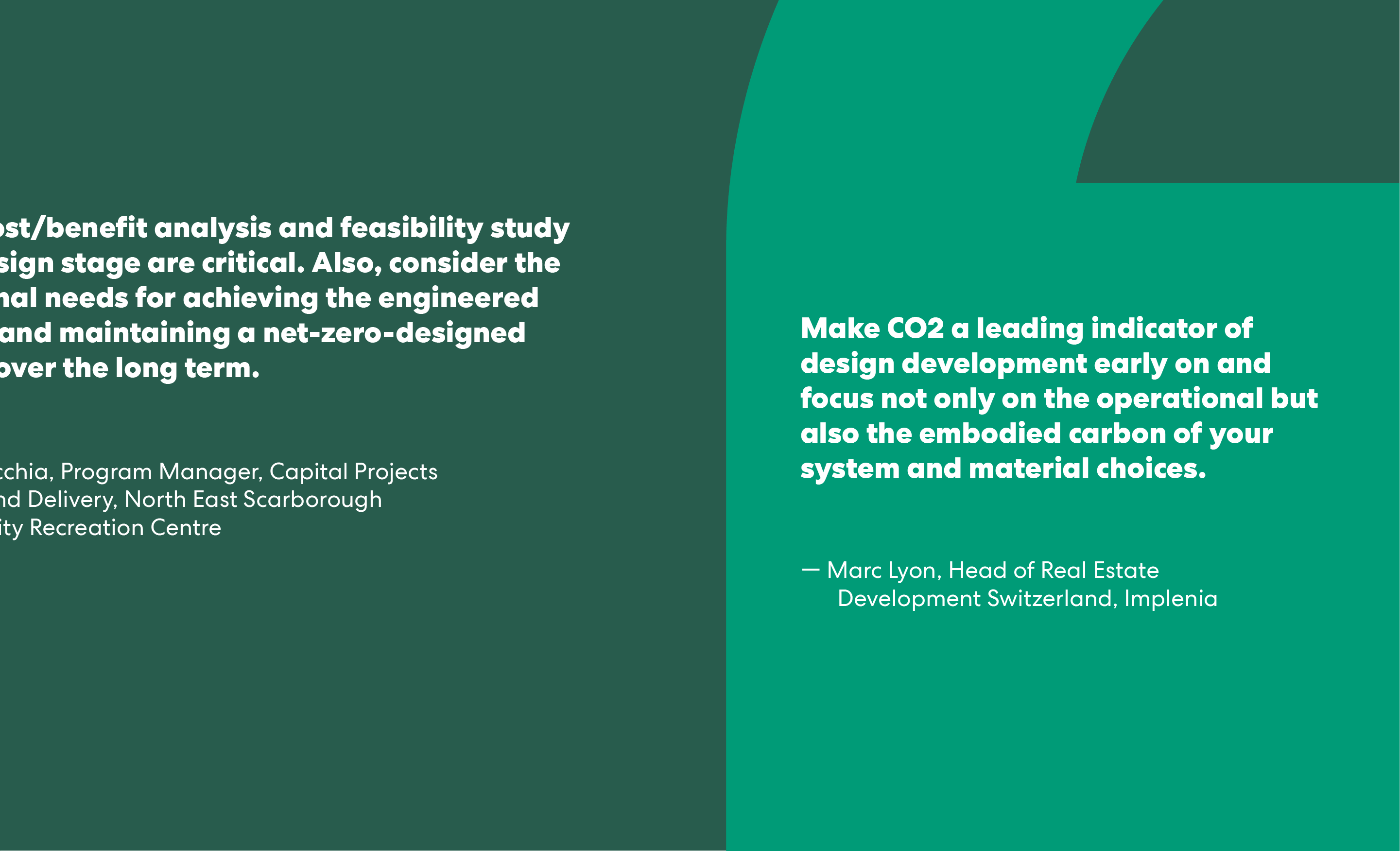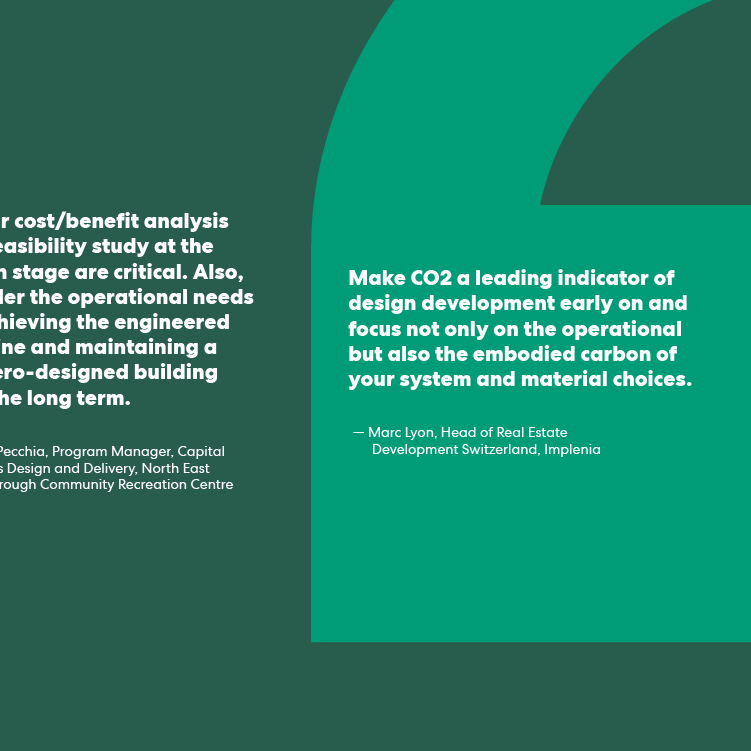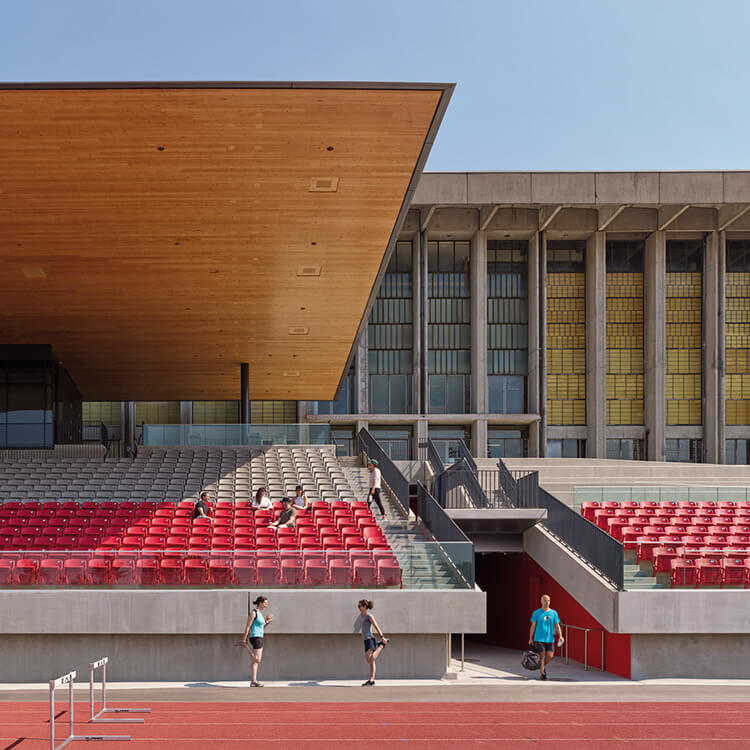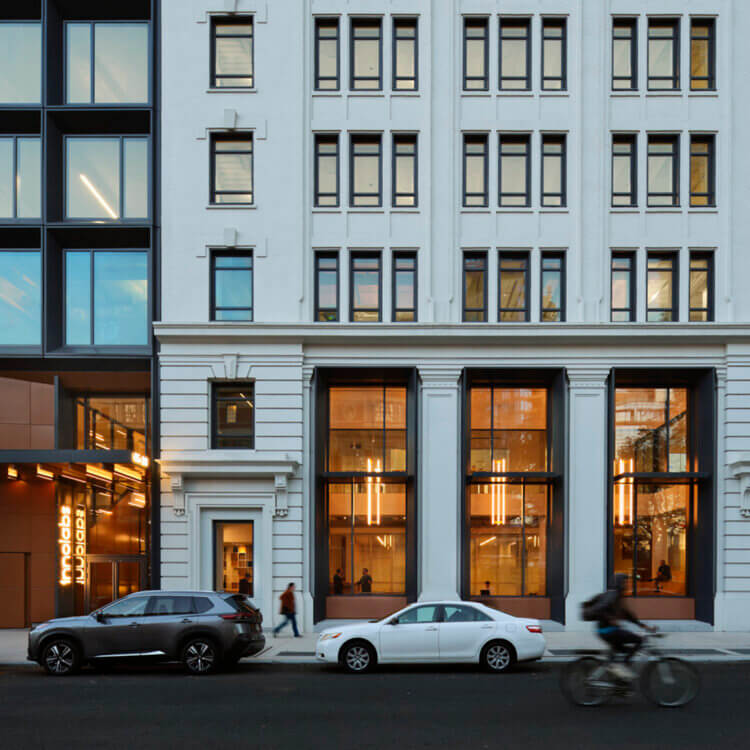Creatively remodeling existing buildings honors a community’s history and preserves local character, which are appealing features for prospective tenants. Using materials that are already in place saves money and lessens environmental impacts. According to the American Institute of Architects, reusing structures reduces embodied carbon by 50-70%. And a 2016 study found that adaptive reuse projects cost less per square foot than new construction.
“We believe that adaptive reuse not only adds value by creating a distinctive and unique workspace for our users, but also contributes meaningfully to a sense of community,” says Edmund Wong, director of asset and environmental sustainability at Allied Properties in Toronto. “Preserving historical elements of existing structures and reducing our environmental impact is something we always strive for. Reduction of embodied carbon and any realized cost savings associated with these activities are a bonus.”


